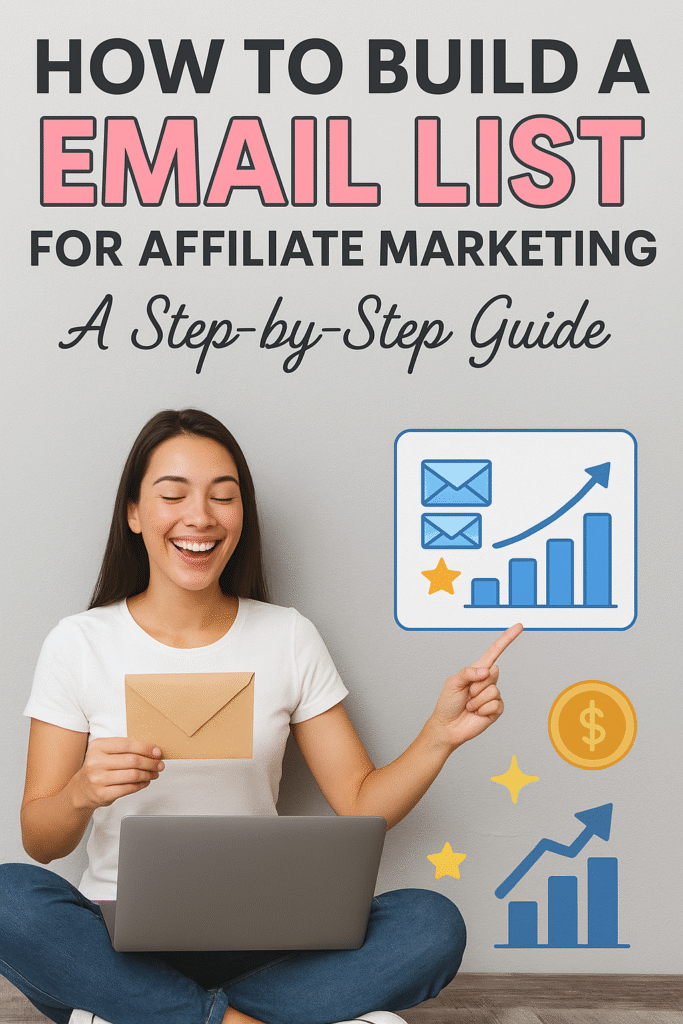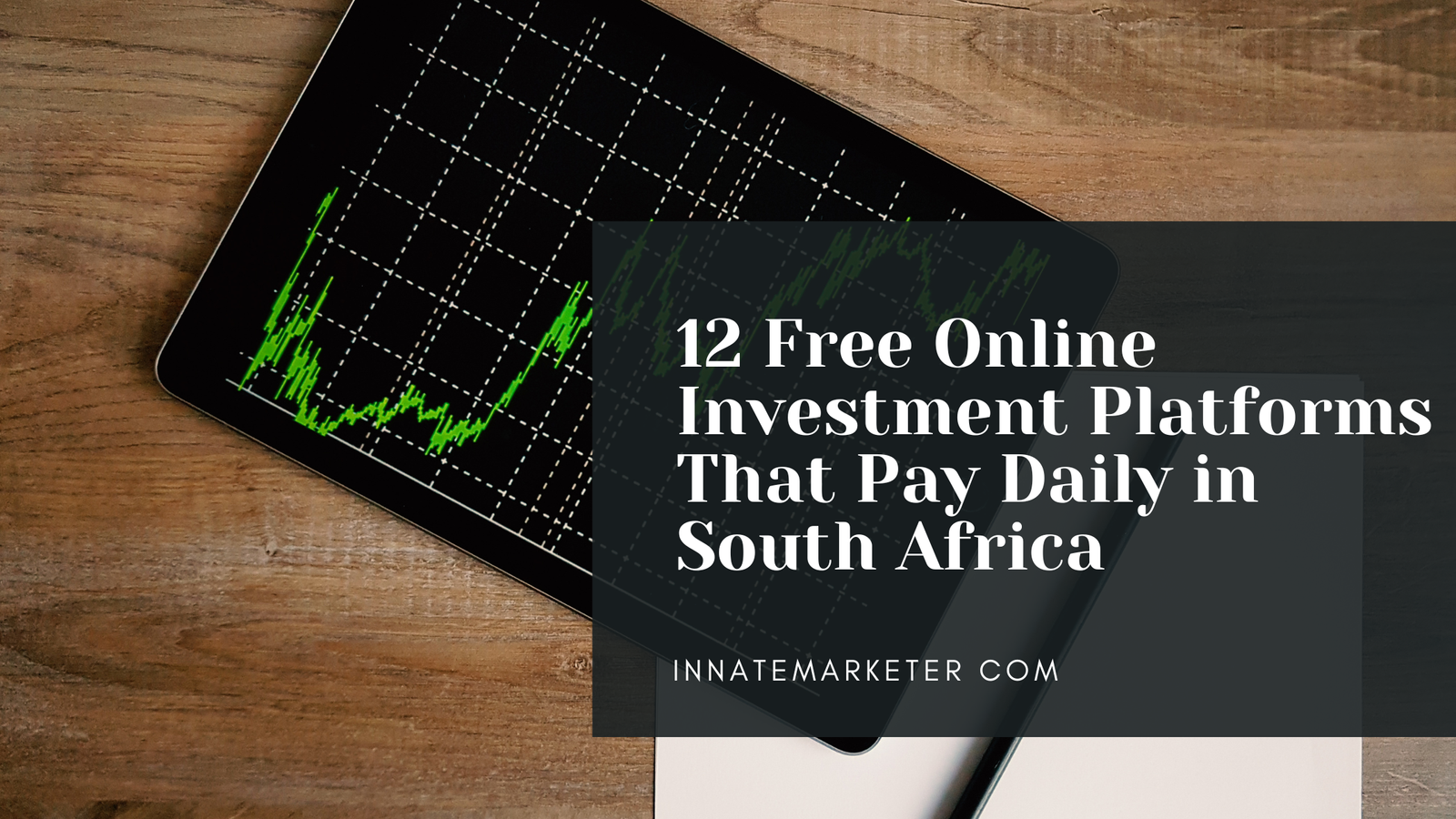Email marketing is a golden tool for affiliate marketers. It lets you turn casual visitors into loyal fans and boost affiliate sales. In fact, only asmall percentage of visitors buy on their first visit, but an email list lets you capture those who aren’t ready to buy yet and nurture them over time. By regularly sending valuable content, you become a trusted authority in your niche.
Once people trust you, they’re far more likely to click your affiliate links or buy the products you recommend. Plus, an email list is your own channel: it won’t disappear if Facebook or Google changes their rules.
In short, building an email list helps you reach a warm, interested audience and shield your affiliate business from sudden algorithm changes.
If you’re brand new to this, you might want to check out our guide on how to start making money with affiliate marketing first.
Below is a beginner-friendly, step-by-step guide to building that email list, with tips to avoid common pitfalls and calls to action to keep your strategy moving forward.
1. Pick Your Niche and Affiliate Offers
Before anything, choose a clear niche. This means picking a specific topic or market (and affiliate products) that fits one target audience. Starting with the right offer ensures alignment between your lead magnet and your products – if they don’t match, people simply won’t be interested. In other words, think about who your ideal subscriber is. What problems do they have, and what affiliate products could help them? Identifying your customer persona first helps you choose products and content that resonate with that audience.
Tips:
- Pick a niche you know well or are passionate about (e.g. home fitness, vegan cooking, personal finance).
- Look for affiliate products that are useful and high-quality. Promoting low-value or irrelevant products will hurt your credibility.
- Avoid being too broad (for example, “health” is broad; “healthy vegan recipes” is specific).
- Beginner mistake to avoid: Choosing a niche just for high commissions. Instead, focus on solving real problems for people.
Call to action: Write down your niche and affiliate offers. Make sure they match each other and your audience’s interests.
2. Choose an Email Marketing Platform
You need a reliable email service provider (ESP) to build and manage your list. A good ESP will help you collect emails, segment subscribers, and automate campaigns.
Key features to look for:
- Automation & Workflows: Sends emails automatically based on triggers (like a signup). These automated email sequences nurture subscribers and promote offers at the right moments.
- Segmentation: Ability to tag or group subscribers (by interest, purchase, etc.) so you can send relevant offers.
- Ease of use: A simple interface and good templates are helpful when you’re starting out.
- Affordability: Many ESPs have free plans up to a certain list size. For example, MailerLite offers a free tier for up to 1,000 subscribers, making it beginner-friendly. Other popular options include Mailchimp, ConvertKit, and GetResponse.
- Affiliate-friendly terms: Some services have clauses about affiliate marketing. To be safe, ask potential providers about their affiliate policy before signing up. For more insights, check out this affiliate-focused email marketing guide.
Tips:
- Experiment with a free plan first to learn the tool.
- Make sure your chosen ESP integrates with landing page builders or pop-up tools if possible.
- Beginner mistake to avoid: Don’t just use your personal email account or basic free tools (like Gmail) for building lists. Always use a proper ESP to avoid deliverability issues and to comply with spam laws (you must get permission before emailing people).
Call to action: Sign up for a free account on an ESP (e.g. MailerLite or GetResponse) and explore its list-building features. Set up a new list for your affiliate campaign and play with the editor.
3. Create a Lead Magnet (Free Incentive)
People usually won’t give you their email just for a newsletter. You need a lead magnet – a valuable free resource or incentive in exchange for their address. A lead magnet could be an ebook, checklist, short video course, quiz, template, or anything that solves a specific problem for your niche audience.
Offering a lead magnet can dramatically increase sign-ups.
Examples of lead magnets:
- An ebook or PDF guide (e.g. “10 Quick Vegan Recipes for Busy Mornings”).
- A checklist or cheat sheet (e.g. “Home Gym Equipment Checklist”).
- A quiz or assessment (e.g. “What’s Your Fitness Personality?”).
- A short email course or webinar (e.g. a 5-day “Healthy Habits” email series).
- A discount coupon or exclusive deal (often used in affiliate marketing).
What makes a good lead magnet:
- Immediate value: It should solve a specific problem or deliver a quick win.
- Relevant and unique: It must fit your niche and not be easily found elsewhere for free. If it feels too generic, people won’t bother.
- High quality: It represents your brand, so make it look polished and professional.
Tips:
- Be clear about the benefit (“Download this free guide to X”).
- Keep it simple to create at first – a single good checklist or simple PDF can work wonders.
- Promote your lead magnet’s main benefit on the landing page and in your ads.
Call to action: Brainstorm 2–3 lead magnet ideas for your niche. Choose one to create (even a simple PDF guide). Then get it ready to upload or link on your site.
4. Build a Landing Page and Opt-in Forms
Now that you have a lead magnet, create a landing page (also called a “squeeze page”) specifically designed to collect emails. A landing page focuses the visitor on one action – signing up – without distractions like menus or unrelated links.
On your landing page:
- Write a strong headline and clear copy that explains why people should sign up (e.g. “Get our Free [Guide/Quiz] to [Benefit]”).
- Use an action-oriented CTA on your button. Even the word you use matters – using “Join” instead of “subscribe” can encourage people to sign up.
- Include a brief benefit list or bullet points: explain what subscribers will get (e.g. “Daily workout tips, special discounts, new recipes, etc.”).
- Add trust signals if possible (like a testimonial or number of subscribers).
- Keep the form very simple. Only ask for what you truly need (usually just email, maybe first name). More fields reduce conversions.
For inspiration, this Shopify guide on building email lists provides actionable insights that work well for affiliate marketers too.
Pop-ups and Signup Forms: Besides landing pages, also place opt-in forms and pop-ups on your website. Pop-ups can capture emails from people who browse around. There are various types:
- Exit-intent pop-ups (when someone is about to leave)
- Timed pop-ups (after they spend some time)
- Scroll pop-ups (after they read a certain portion)
Tips:
- If you have a blog or site, add an opt-in form in the sidebar or footer that links to your lead magnet.
- Test different pop-ups. A/B test form type and wording to find what converts best.
- Beginner mistake to avoid: Don’t hide your forms. Make signups obvious. Pop-ups might feel scary, but they work – especially early on when you have less traffic, be aggressive in capturing emails.
Call to action: Create your landing page (with your ESP or page builder) and integrate your opt-in form. Add at least one pop-up on a key page. Make sure it clearly asks for an email in exchange for your lead magnet.
5. Drive Traffic to Your Lead Magnet
With your lead magnet and signup page ready, it’s time to get people to see it. Driving traffic is essential: no visitors means no signups. Use multiple channels to attract your niche audience:
- Social Media: Share posts or ads on platforms where your audience hangs out (Facebook, Instagram, Twitter, Pinterest, LinkedIn, etc.). Always include a link to your landing page and a clear CTA (e.g. “Sign up for our free training on X!”).
- Content Marketing (SEO): Write relevant blog posts or YouTube videos that attract organic search traffic. For example, if your niche is digital cameras, create a “beginner’s guide to DSLR photography” and within that content link to your free camera-setup checklist.
- Paid Advertising: Consider using ads to send people directly to your lead magnet. Google Ads, Facebook Ads, and LinkedIn Ads can work well. Use targeted ads that highlight the benefits of your lead magnet. For example, run a Facebook ad for your free ebook in front of people who match your target profile. You can also use retargeting ads to capture visitors who looked at your site but didn’t sign up.
- Forums and Communities: Participate in niche communities (Reddit, Quora, Facebook groups, etc.) by genuinely helping people and sharing your expertise. When appropriate, mention your free resource with a link. (Be careful not to spam – always provide value first.)
- Existing Lists and Partnerships: If you have a small email list already (from any context), promote your new lead magnet to it. You might also partner with other bloggers or affiliates: they might share your free offer with their audience (often for a small fee or a mutual arrangement).
For more beginner-friendly strategies, this email marketing campaign guide breaks things down simply.
Tips:
- Start small: if ads sound expensive, use mainly free channels first (SEO, social sharing, communities).
- Target your audience: Make sure your ad or content reaches people interested in your niche (using interest tags on Facebook, keywords on Google, etc.).
- Consistent calls to action: Whether in a blog, video, or social post, always tell people exactly what to do (“Click here to get the free [X]!”).
Call to action: Share a link to your landing page on your social accounts today. Write one blog/social post explaining the benefit of your lead magnet and include a “Subscribe” call-to-action.
Bonus Tip: If you’re considering expanding beyond affiliate marketing, explore other beginner-friendly options like influencer marketing, blogging for income, or even microtasks for extra cash.





